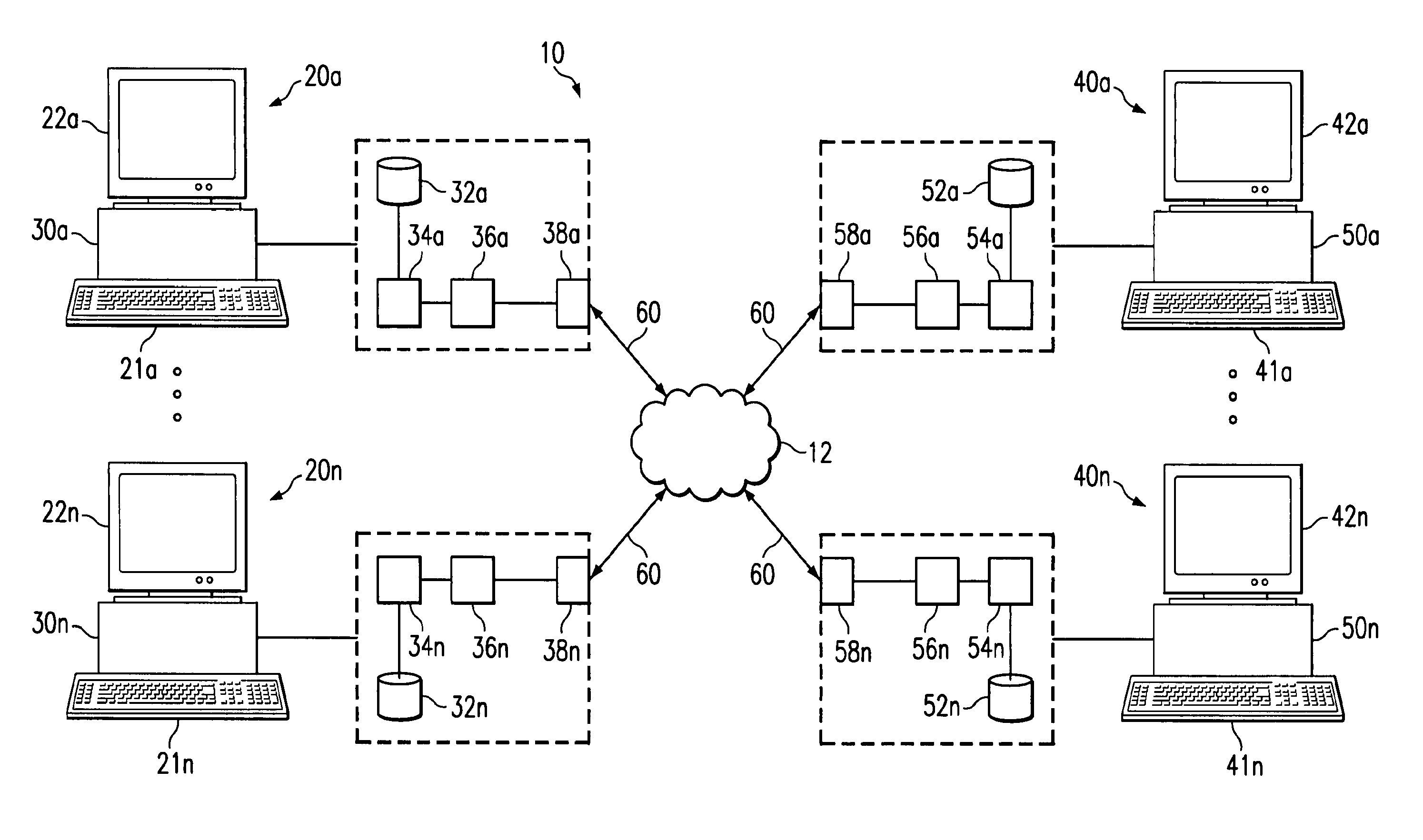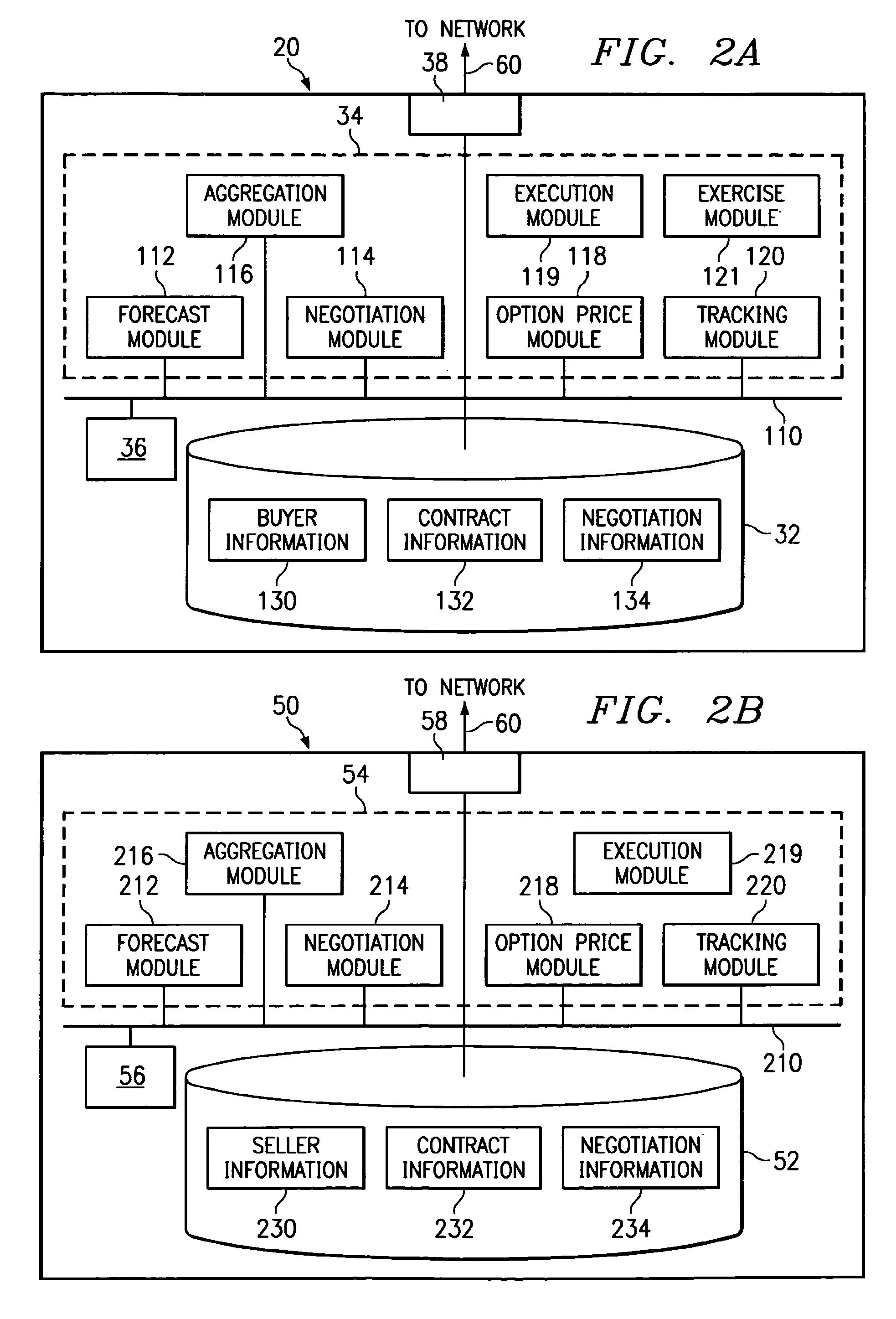Method and System for Multi-Enterprise Optimization Using Flexible Trade Contracts
a multi-enterprise and trade contract technology, applied in the field of data processing, can solve the problems of complex and difficult to interpret agreements, less reliable contracts, and more common supply-demand mismatches
- Summary
- Abstract
- Description
- Claims
- Application Information
AI Technical Summary
Benefits of technology
Problems solved by technology
Method used
Image
Examples
Embodiment Construction
[0019]FIG. 1 illustrates an exemplary system 10 for multi-enterprise optimization using flexible trade contracts. In the illustrated embodiment, system 10 includes one or more buyer computers 20a through 20n and one or more seller computers 40a through 40n. In one aspect of operation, one or more buyer computers 20 communicate with one or more seller computers 40 to collaborate in negotiating the supply by sellers and procurement by buyers of products, services, or other tangible or intangible items offered by sellers associated with seller computers 40. Buyer computers 20 and seller computers 40 cooperate to attempt to optimize one or more supply chain or other suitable activities between buyers associated with buyer computers 20 and sellers associated with seller computers 40. Ideally, through an interactive negotiation process and contractual monitoring system, system 10 helps to eliminate mismatches between a buyer's demand and a seller's supply to increase the profitability of ...
PUM
 Login to View More
Login to View More Abstract
Description
Claims
Application Information
 Login to View More
Login to View More - R&D
- Intellectual Property
- Life Sciences
- Materials
- Tech Scout
- Unparalleled Data Quality
- Higher Quality Content
- 60% Fewer Hallucinations
Browse by: Latest US Patents, China's latest patents, Technical Efficacy Thesaurus, Application Domain, Technology Topic, Popular Technical Reports.
© 2025 PatSnap. All rights reserved.Legal|Privacy policy|Modern Slavery Act Transparency Statement|Sitemap|About US| Contact US: help@patsnap.com



